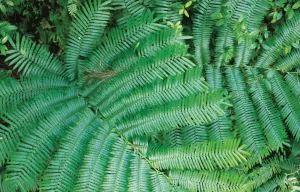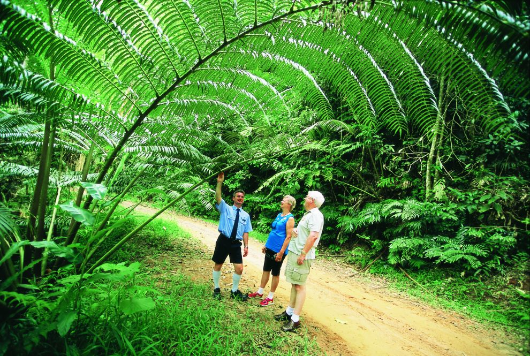Forest Flora – King Fern
 #ForestFlora – The King Fern (Angiopteris evecta) is one of the largest and most ancient ferns in the world. It’s not to be confused with Todea barbara, a fern that is also called the King Fern that is very impressive but doesn’t have the massive fronds of the Angiopteris.
#ForestFlora – The King Fern (Angiopteris evecta) is one of the largest and most ancient ferns in the world. It’s not to be confused with Todea barbara, a fern that is also called the King Fern that is very impressive but doesn’t have the massive fronds of the Angiopteris.
The King Fern, also known as Giant Fern or Mule’s Foot Fern, has called Australia home for 300 million years but, due to a gradual drying of the continent, they’re now only found in the rainforests of Queensland, with another small population in north-eastern Arnhem Land, NT. Remarkably, there is also one plant growing naturally in Northern NSW which was discovered in the Tweed Valley in 1977, despite the species being presumed to be extinct. It is thought the species was once scattered around the far north-east of NSW, possibly extending as far south as Byron Bay.
King Ferns thrive where they can plumb their roots into permanent water as these enormous ferns need constant moisture to help support their huge fronds – the biggest on earth – measuring up to 5m on fully mature specimens.
 Angiopteris evecta looks superficially more like a palm crown growing directly out of the ground but this is actually a relic fern from the late Paleozoic era. This is the only species from its genus in Australia, but it does occur elsewhere in southeast Asia/Oceania.
Angiopteris evecta looks superficially more like a palm crown growing directly out of the ground but this is actually a relic fern from the late Paleozoic era. This is the only species from its genus in Australia, but it does occur elsewhere in southeast Asia/Oceania.
Visiting the Daintree? A good place to see King Ferns is along the road to Cape Tribulation, and the Nandroya Falls track in the Palmerston section of Wooroonooran National Park (south of Cairns).
Fun Facts
- Propagation from spores can be quite tricky for the isolated King Ferns, because the spores need to be no more than a day old in order to grow. As a result, some gardeners will propagate utilising ‘auricles’ instead. ‘Auricles’ are the ear-like structures at the base of the King Ferns’ fronds, and they can produce new ferns in around three to six months, which is a much faster process than propagating from spores.
Information sourced from Daintree Discovery Centre, Wet Tropics Management Authority, Botanic Garden Trust Sydney & ABC’s Gardening Australia.
Want more good Rainforest news in your life?
Subscribe to our eNews | Follow us on Instagram | Like us on Facebook | Subscribe to our YouTube channel
Help Protect Rainforests Forever
Donate to Protect Rainforests Forever | Become a Rainforest Guardian for as little as $2 a month | Partnership Options

